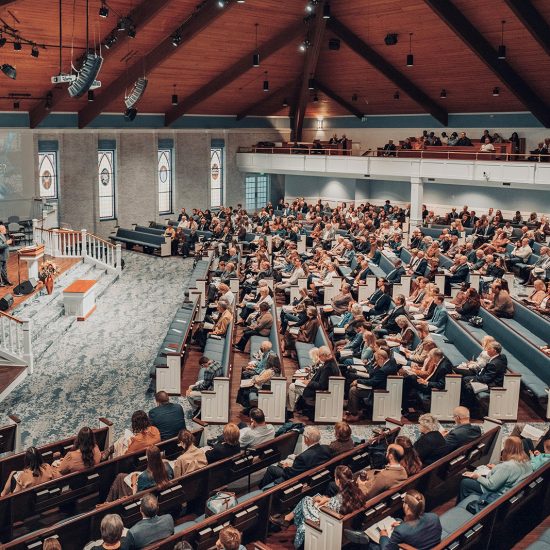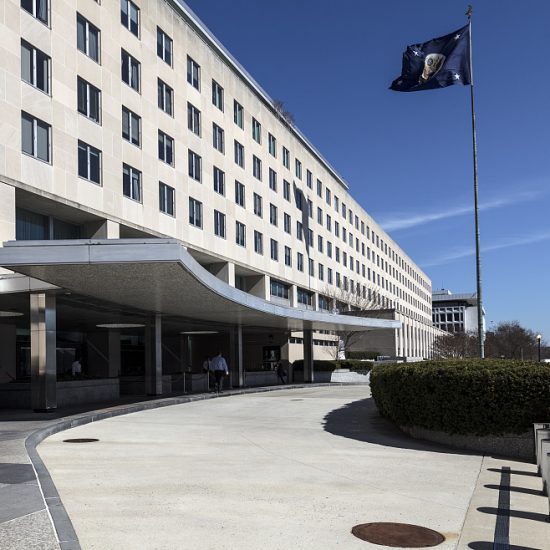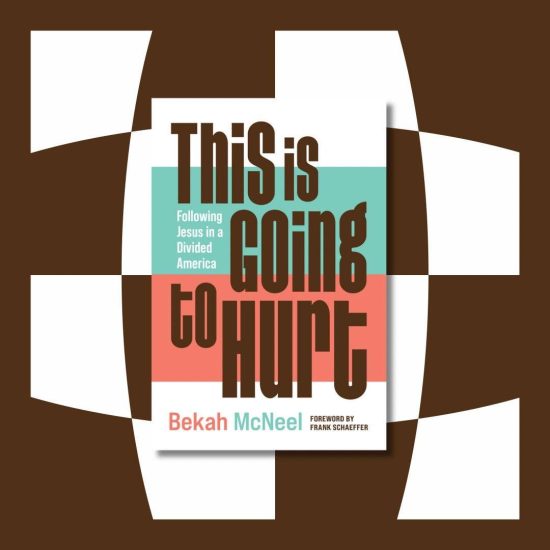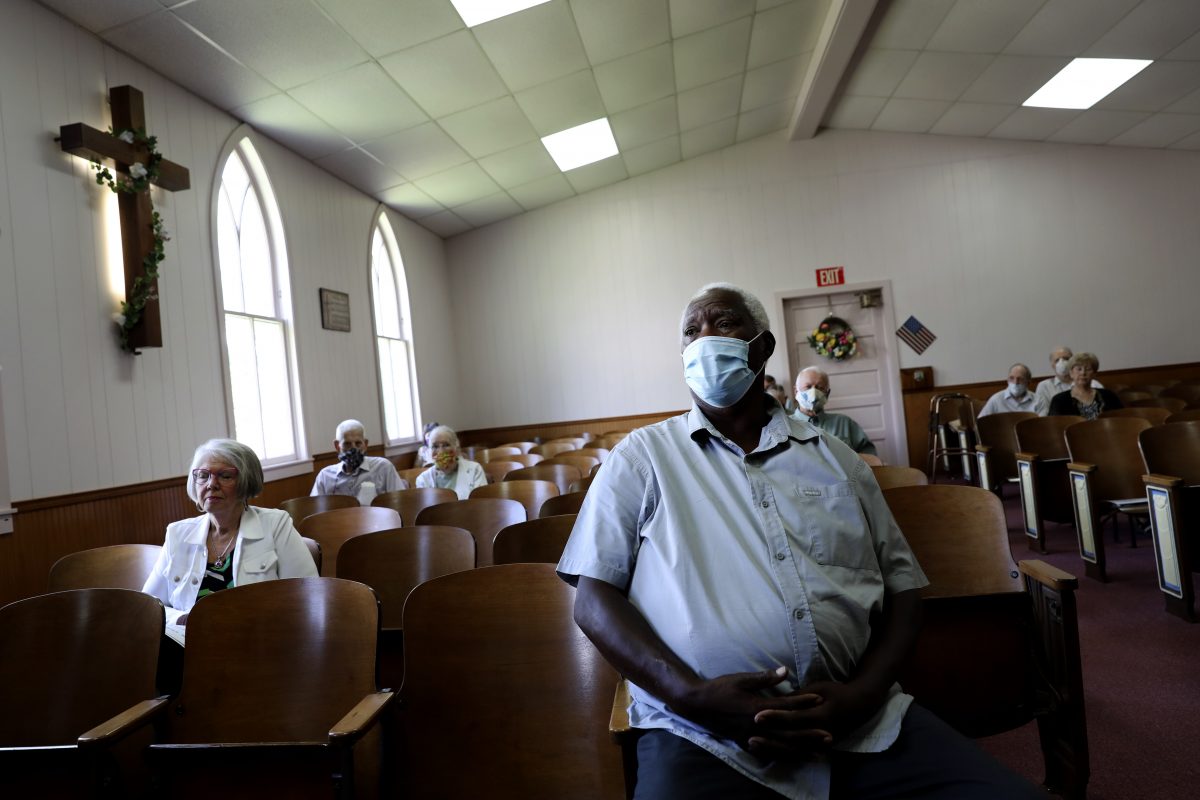
(RNS) — Timothy Filston, pastor of First Presbyterian Church in Thomasville, Georgia, had a request for his mask-wearing congregation during a recent sermon.
“Give me all you can through your eyebrows,” said Filston.
The church has begun meeting again in person for worship, and congregation members are required to wear masks during services. That’s great for helping prevent the spread of COVID-19, but the masks make it hard for a preacher like Filston to read the room. He has trouble discerning whether the congregation is paying attention or nodding off during his sermon.
All he sees is a crowd of blank faces. Eyebrows are the only clue he’s got.
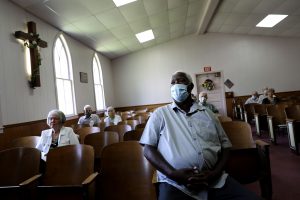
Milton L. McDaniel Sr. attends a service at Boskydell Baptist Church on Aug. 2, 2020, in Carbondale, Illinois. (Wong Maye-E/Associated Press)
Preachers like Filston have had to adapt quickly during the coronavirus pandemic. Many moved from preaching in person to speaking to their congregations online after most congregations shut down in-person services during the early days of the pandemic.
As congregations reopen, often with social distancing and masks, preachers have faced new challenges, said Jim Hudnut-Beumler, professor of American religious history at Vanderbilt Divinity School in Nashville. Hudnut-Beumler, an ordained Presbyterian minister who often guest preaches, said preaching is more of a conversation with the congregation than a lecture.
A preacher tries to bring “a word of gospel to our people,” he said. But it’s not always clear if the message gets through.
“There are always two sermons in the room,” he said. “The one the preacher thinks she’s preaching. And the one the congregation member takes away.”
Because of that, he said, it’s important for the preacher to be in tune with their congregation and to see how they respond. He often follows advice he got while in seminary: pick out one face in the pews, talk to them, then move your focus to another person.
That’s difficult to do when preaching online, he said, especially if the sermon is prerecorded. Looking into a camera, he said, “you get absolutely nothing back.” Preaching to a live congregation is better, but masks complicate things because they can hide feedback from the congregation. As a result, he said, preachers have to be even more attentive to their congregations during the sermon.
Dan Whitmarsh, pastor of Lakebay Community Church in Lakebay, Washington, said he found preaching online easier than preaching to a masked congregation. His congregation, which drew about 65 to worship before the pandemic, used Zoom for online services. Because of that, everyone’s face was visible, and their reactions were easier to see. Plus, he said, you never knew what might happen.
“You are having church and then all of a sudden, Doug’s dog jumps up on his lap,” he said, “and everyone laughs.”
While the church was meeting online, Whitmarsh would also hang around and chat with people after the service, where he’d get a sense of how they were doing and how the sermon affected them.
When the church began meeting in person, Whitmarsh decided he’d wear a mask while preaching to set a good example for the congregation. Worshippers are also masked during services. It’s part of his job as a pastor, he said, to care for his congregation’s well-being.
“I don’t want my people to die,” he said. “And I don’t want to end up on the news.”
The masks do make it harder for him to tell if the sermon is hitting home. Whitmarsh said he usually writes out the entire sermon ahead of time. He also comes up with some additional stories to use as examples in case his main point isn’t connecting.
While he preaches, he watches the congregation for signs they are tracking with the sermon. Sometimes he will prompt them to repeat a point he’d made or to ask questions. Or he may shelve one of the minor points he wanted to make, instead spending time reinforcing the main point. For him, sermons are about relationships, not just communicating information.
“It’s not just Pastor Dan with today’s wisdom that I am going to dispense to you,” he said. “It’s incarnation, all around the room. I am bringing something to you. You are bringing something to me.”
At Audubon Park Covenant Church in Orlando, Florida, the small congregation has been holding outdoor services in the side yard of the church property in recent weeks. The congregation sits in the shade of a live oak tree, while Sarah Robinson coordinates the service from a small stage, switching between the congregation in front of her and those watching the service streamed online.
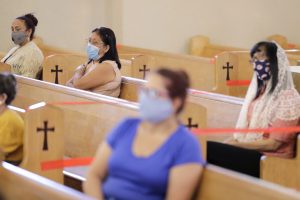
People participate in a Sunday Mass, in pews marked by tape for social distancing, at St. Agnes Church in Paterson, New Jersey, on June 14, 2020. (Seth Wenig/Associated Press)
About a dozen older members, who wear masks, come to the in-person service, said Robinson. Younger members usually join online. Robinson, who wears a mask while preaching, is careful not to walk around too much during the service — otherwise, she’ll walk off camera and people online can’t see her.
“It’s less than ideal, but it’s what we can do for now,” she said.
Even before the pandemic, her sermons were interactive. Now they are even more so. At the end of the sermon, Robinson does a five-minute question-and-answer session, with feedback from both in-person and online worshippers.
“I’ve never preached from behind a pulpit,” she said. “I always come down in the midst of the congregation.”
Even meeting in person, things are not like before. There’s no coffee hour. And while people pass the peace, they greet one another from a distance. Robinson keeps an eye on the chatter online and sometimes will read out what people have posted.
Still, she said, people are grateful to be able to come to church. It’s important to them to be together and to keep on with the church’s mission, no matter what challenges they face.
“We’ll keep doing our best,” she said.
For the foreseeable future, she said the church will continue to meet outside.
“I mean, we live in Florida. So it is only going to get easier for us,” she noted.




